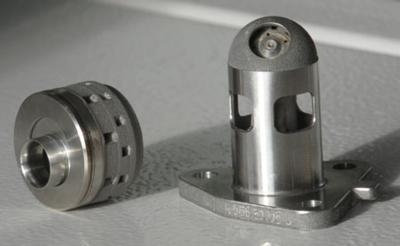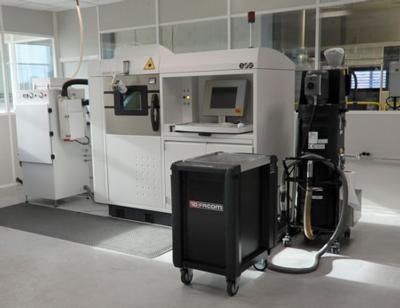Fri, Jan 16, 2015
Fuel Injector Nozzles Being Made Using Selective Laser Melting Techniques
Helicopter engine manufacturer Turbomeca is setting up new manufacturing capability at its facility in Bordes (France). After years of maturation and prototype testing, Turbomeca has entered serial production of parts using the latest additive manufacturing, or 3D printing process. Bordes facility is one of the first of its kind to serial produce additive components for aerospace propulsion industry in France.

Arrano test and production engines will feature fuel injector nozzles made using Selective Laser Melting (SLM) techniques. This leading-edge manufacturing process will also be used to manufacture Ardiden 3 combustor swirlers. These engines are Turbomeca’s latest models and amongst the most advanced turboshafts ever designed.
Additive manufacturing produces parts to a three-dimensional CAD (computer-aided design) model. Unlike traditional manufacturing processes (forging and machining) which are based on material removal, additive manufacturing builds layers, each between 20 and 100-micrometers thick, of fine metal powder to produce complex-shape parts. In the case of SLM, a computer-controlled laser shoots pinpoint beams onto a bed of nickel-based super-alloy powder, to melt the metal in the desired areas.

Additive Manufacturing also simplifies the manufacturing process. A traditional fuel-injector nozzle is made up from dozens different pieces. Arrano component is made from one single piece of material and features advanced injection and cooling functions. One SLM machine is already in service, and qualified for mass production, with others to be integrated over the coming years.
Additive manufacturing is part of Turbomeca’s ambitious “Future Line” program designed to improve all its manufacturing capabilities. By introducing new, high-end machine tools and new processes like additive manufacturing and HVOF (High Velocity Oxy-Fuel) coatings, Turbomeca will significantly improve its compressor and turbine blade manufacturing capabilities at Bordes.
(Images provided by Turbomeca)
More News
Also: Netherlands Donates 18 F16s, 2 737s Collide On Ramp, E-7 Wedgetail Cut, AgEagle's 100th In S Korea The Pilot and Aircraft Privacy Act was introduced in the House by Represent>[...]
Pilot Also Reported That Due To A Fuel Leak, The Auxiliary Fuel Tanks Were Not Used On June 4, 2025, at 13:41 eastern daylight time, a Piper PA-23, N2109P, was substantially damage>[...]
Have A Story That NEEDS To Be Featured On Aero-News? Here’s How To Submit A Story To Our Team Some of the greatest new stories ANN has ever covered have been submitted by our>[...]
From 2023 (YouTube Edition): Reflections on War’s Collective Lessons and Cyclical Nature The exigencies of war ought be colorblind. Inane social-constructs the likes of racis>[...]
What Goes Around, May Yet Come Back Around, Klyde FMI: www.klydemorris.com>[...]
 Airborne 06.30.25: US v ADS-B Misuse, Natl STOL Fire, Volocopter Resumes
Airborne 06.30.25: US v ADS-B Misuse, Natl STOL Fire, Volocopter Resumes NTSB Prelim: Piper PA-23
NTSB Prelim: Piper PA-23 ANN FAQ: Submit a News Story!
ANN FAQ: Submit a News Story! Classic Aero-TV: One Mans Vietnam
Classic Aero-TV: One Mans Vietnam Klyde Morris (06.30.25)
Klyde Morris (06.30.25)




